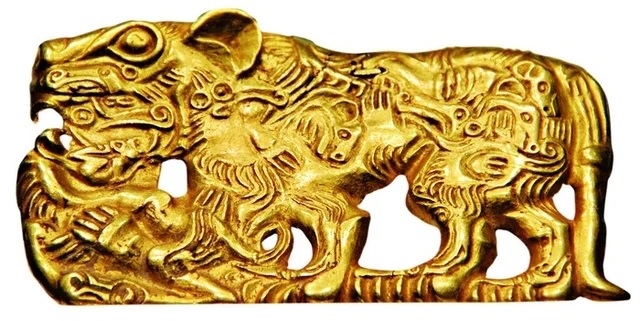"Warrior nomads in Mongolia called the Xiongnu had a taste for the finer things in life, particularly gold jewelry, which they wore to their graves. Archaeologists have wondered whether gold objects found in 2nd- and 3rd-century B.C. Xiongnu burial sites originated from local deposits or were gifts from Chinese neighbors. Experiments now suggest that the Xiongnu gold originated from local panning in Mongolia instead of Chinese mines, says Martin Radtke, a physicist at Germany’s BAM Federal Institute for Materials Research & Testing, in Berlin, who led the work (Anal. Chem., DOI: 10.1021/ac3025416). The researchers used an X-ray method to look for platinum in some 30 Xiongnu gold foils found in four tombs. Absence of platinum would point toward a Chinese origin because Chinese mining techniques used at that time resulted in nearly platinum-free gold. But the researchers did find platinum, which suggests that the Xiongnu used local sources of gold obtained by panning, a method that leaves traces of platinum in gold."
-taken from Chemical & Engineering News
 |
| Xiongnu golden tiger from Warrior States Period 475-221 BCE. |
 |
| Special Exhibit: Xiongnu, Henan Provincial Museum, Zhengzhou. Image credit: Gary Todd's flickr. |
 |
| Ordos Bronze Museum. |
Source/Quote:





Comments
Post a Comment